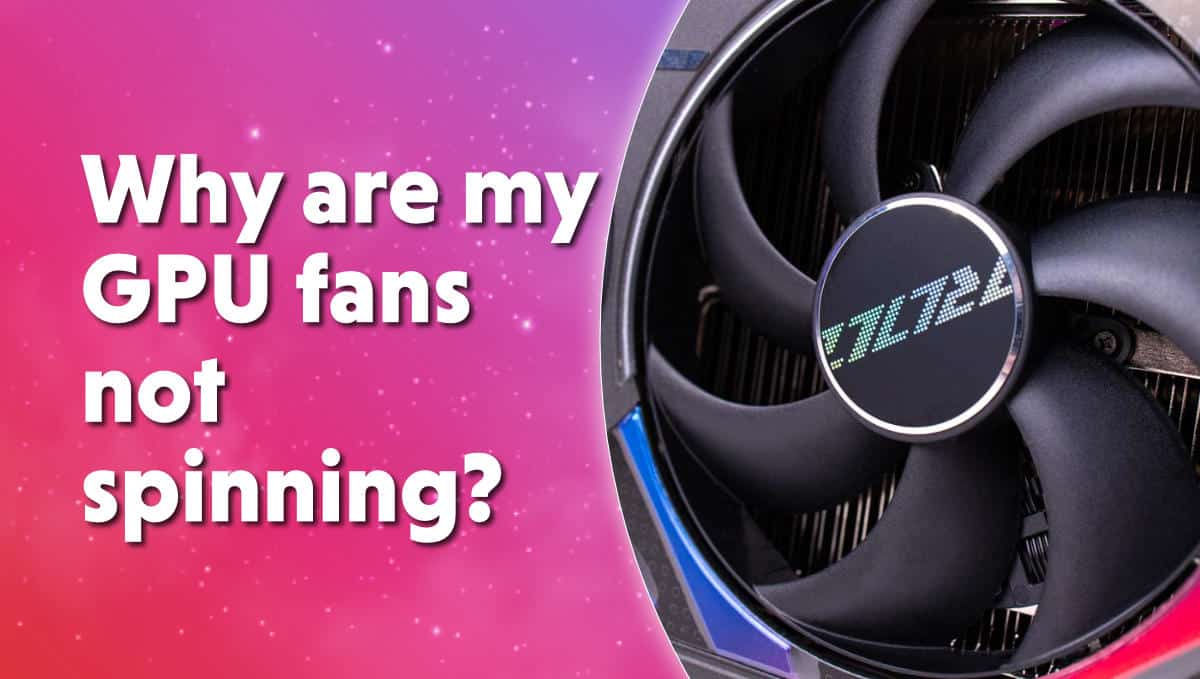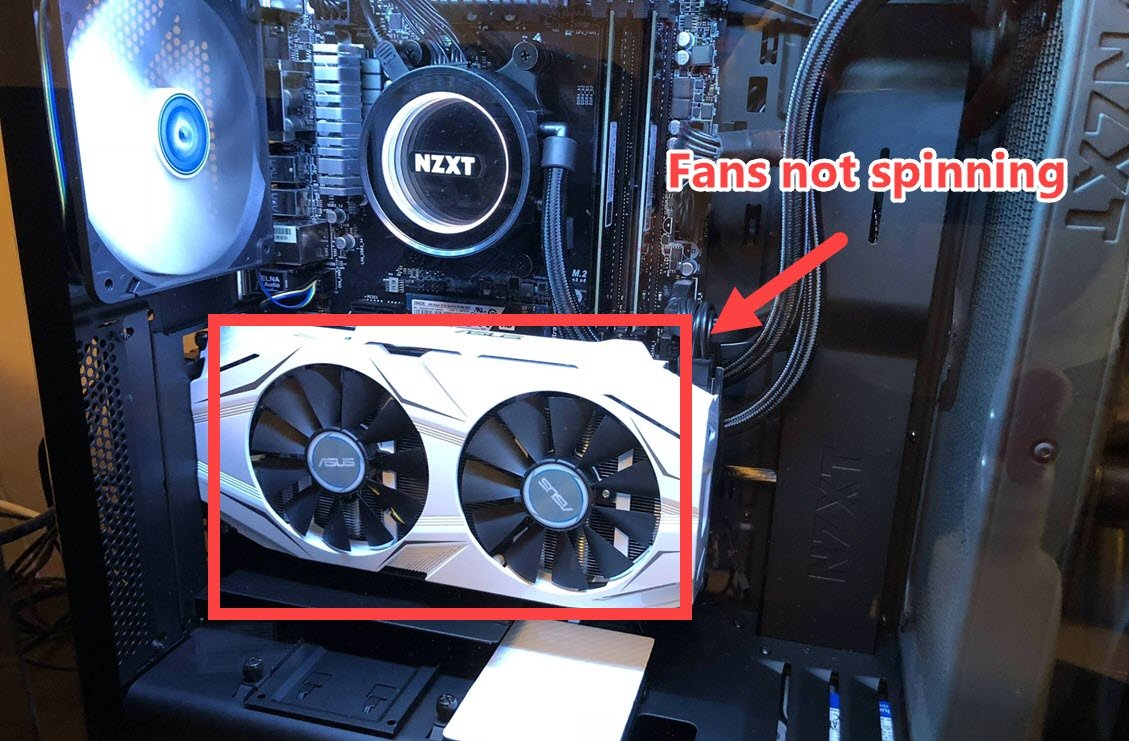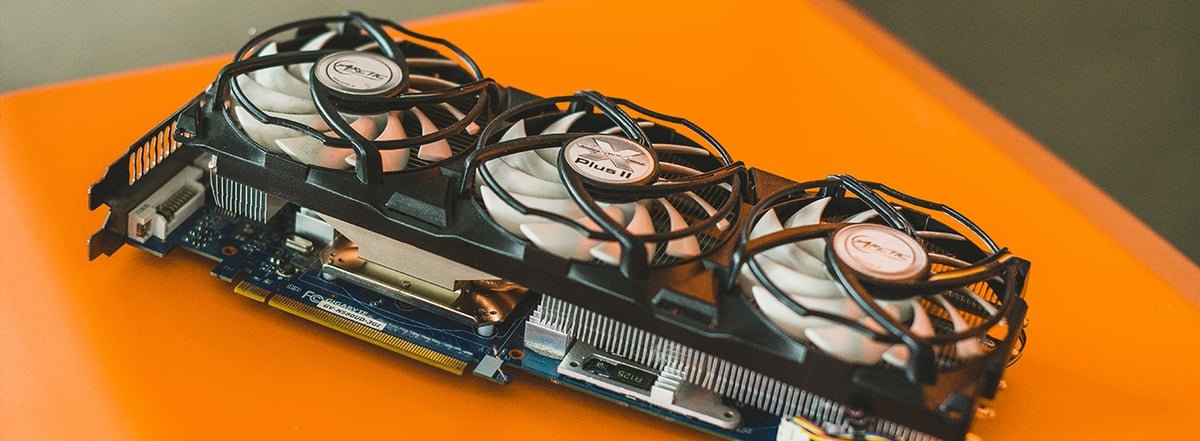If your GPU fan is not spinning, it could be due to a malfunctioning fan, dust accumulation, or loose connections. This issue can lead to overheating and performance issues, so it’s important to address it promptly.
When your GPU fan stops spinning, it can be a cause for concern. Whether you are a gamer or use your computer for graphic-intensive tasks, a malfunctioning GPU fan can significantly impact performance and possibly damage your hardware. We will discuss some common reasons why your GPU fan may not be spinning and provide potential solutions to resolve this issue.
By following these steps, you can ensure that your GPU fan is operating optimally, keeping your system cool and performing at its best. Let’s dive in and explore how to troubleshoot and fix a non-spinning GPU fan.

Credit: www.reddit.com
Common Causes Of Gpu Fan Not Spinning
When your GPU fan isn’t spinning, it can be a cause for concern. A malfunctioning GPU fan can lead to overheating, reduced performance, and potential hardware damage. Understanding the common causes of GPU fan issues can help in troubleshooting and resolving the problem effectively.
Dust And Debris Buildup
One common cause of a GPU fan not spinning is the accumulation of dust and debris around the fan. Over time, these particles can obstruct the fan blades and prevent them from spinning. Regular cleaning of the GPU and its fan can help prevent this issue. It’s important to ensure that the fan is free from any obstructions that could hinder its operation.
Faulty Fan Connection
If the GPU fan is not spinning, it is possible that the connection between the fan and the power supply is faulty. This can be caused by loose connections or a damaged cable. Checking and reseating the fan connection can help determine if this is the root of the problem.
Fan Control Settings
Incorrect fan control settings can also lead to the GPU fan not spinning. Ensure that the fan control settings in your system are configured appropriately to activate the fan when the GPU temperature rises. Adjusting these settings through your graphics card software or system BIOS can potentially resolve the issue.
Overheating Issues
When a GPU fan is not spinning, it can be a sign of overheating. An overheated GPU can automatically shut down or incur damage. Regular monitoring of GPU temperatures and proper cooling can help mitigate this issue. Ensuring proper airflow within the system and using efficient cooling solutions can aid in preventing overheating problems.

Credit: www.wepc.com
Troubleshooting Steps
If your GPU fan is not spinning, it can lead to overheating and performance issues. It’s important to perform some troubleshooting steps to resolve the issue and prevent any potential damage to your graphics card. Below are the essential steps to troubleshoot and fix the non-spinning GPU fan problem.
Step 1: Power Cycle The Computer
To start troubleshooting, power cycle your computer by shutting it down completely, unplugging the power supply, and then pressing the power button for a few seconds. After that, plug the power supply back in and turn on the computer to see if the GPU fan starts spinning.
Step 2: Check Fan Connection
Ensure that the fan is securely connected to the GPU. Check the fan connector and make sure it is not loose or damaged. Reconnecting the fan securely can often resolve the issue.
Step 3: Clean Dust And Debris
Over time, dust and debris can accumulate on the GPU fan blades, hindering their movement. Use compressed air or a soft brush to gently clean the fan and remove any obstructions. It’s essential to keep the fan clean to allow for proper airflow.
Step 4: Adjust Fan Control Settings
If your GPU has fan control settings, check and adjust them using the manufacturer’s software or BIOS. Ensure that the fan is set to automatically adjust its speed based on the GPU’s temperature. You can also try resetting the fan settings to default.
Step 5: Monitor Temperature And Overheating
Use software to monitor the temperature of your GPU. If the temperature is excessively high even when the fan is spinning, it may indicate a larger issue with the GPU, such as inadequate cooling or a malfunction. If overheating persists, consider seeking professional assistance.
Fixing The Gpu Fan Not Spinning
Are you facing the frustrating issue of your GPU fan not spinning? This can lead to overheating and even damage your graphics card if left unresolved. Luckily, there are several solutions to fix this problem. In this article, we will explore three effective fixes that will get your GPU fan spinning again and ensure optimal cooling for your system.
Fix 1: Reset Fan Speed Using Software
If the GPU fan is not spinning, the first step is to check if the fan speed has been set to zero or a low value in the software controlling it. Follow these steps to reset the fan speed:
- Open the graphics card control panel software on your computer.
- Navigate to the fan control or cooling settings section.
- Ensure that the fan speed is set to automatic or a suitable value for efficient cooling.
- Apply the changes and test if the GPU fan starts spinning properly.
By resetting the fan speed, you can resolve the issue without any additional hardware changes.
Fix 2: Replace Or Repair The Fan
If resetting the fan speed does not solve the problem, it could indicate a faulty or damaged fan. In such cases, you may need to replace or repair the fan. Here’s what you can do:
- Carefully open your computer case and locate the GPU fan.
- Inspect the fan for any visible damage, such as broken or bent blades.
- If the fan is damaged, you can try repairing it by gently straightening bent blades or replacing a broken fan blade.
- If the fan is beyond repair, it is advisable to replace it with a compatible replacement fan.
- Make sure to properly connect the new fan to the GPU and secure it in place.
By replacing or repairing the fan, you can ensure proper cooling and avoid any further issues with overheating.
Fix 3: Upgrade Gpu Cooling System
If you’re still facing issues after trying the previous fixes, it may be time to consider upgrading your GPU cooling system. The default cooling system on graphics cards may not always provide sufficient cooling, especially for high-performance GPUs or in hot environments. Upgrading the cooling system can involve:
- Installing an aftermarket GPU cooler that offers better cooling performance.
- Adding additional case fans to improve airflow within your computer case.
- Applying thermal paste to ensure proper heat transfer between the GPU and the cooler.
- Considering liquid cooling solutions for more efficient and quieter cooling.
By upgrading your GPU cooling system, you can enhance the overall performance and longevity of your graphics card.
Preventive Measures
Preventive Measures for GPU Fan Not Spinning:
Regularly Clean And Maintain Gpu
Regular cleaning and maintenance of your GPU (Graphics Processing Unit) is essential to ensure optimal performance and prevent the fan from not spinning. Dust and debris can accumulate over time, causing the fan to clog and become less efficient. To prevent this, follow these steps:
- Power off the computer and unplug it from the power source.
- Open the computer case to access the GPU.
- Gently remove the GPU from its slot.
- Use compressed air or a soft brush to remove dust from the fan blades, heatsink, and surrounding area.
- Check for any loose cables and reseat them securely.
- Reinstall the GPU firmly into its slot.
- Close the computer case and plug it back in.
Monitor Temperature And Performance
Monitoring the temperature and performance of your GPU can help you detect any issues early on. Overheating can cause the fan to stop spinning, leading to potential damage. Here’s how you can keep an eye on your GPU:
- Install monitoring software that provides real-time temperature and performance data.
- Monitor the temperature regularly and ensure it stays within the recommended range.
- Take note of any sudden spikes in temperature, as this could indicate a problem.
- Keep an eye on the performance metrics to identify any drops or anomalies.
Avoid Overclocking Without Proper Cooling
Overclocking your GPU can lead to increased performance, but it can also generate more heat. Without adequate cooling, the fan may struggle to keep up with the increased workload, resulting in it not spinning. Follow these guidelines when overclocking:
- Ensure that your GPU is equipped with a reliable aftermarket cooling solution.
- Do thorough research on safe overclocking settings for your specific GPU model.
- Gradually increase the clock speed and monitor the temperature closely.
- If you notice high temperatures or the fan not spinning, reduce the overclock or invest in additional cooling.
Ensure Adequate Airflow In The Computer Case
Proper airflow inside your computer case is crucial for maintaining optimal temperature conditions for your GPU. Insufficient airflow can cause overheating and prevent the fan from spinning. Consider these suggestions to enhance airflow:
- Arrange cables neatly to avoid obstructing the airflow path.
- Remove any unnecessary obstacles inside the case, such as storage drives or cables that impede airflow.
- Add additional case fans to improve air circulation.
- Position the computer in a well-ventilated area with enough clearance around it.

Credit: www.reddit.com
Frequently Asked Questions On Gpu Fan Not Spinning
Why Is My Gpu Fan Not Spinning?
The GPU fan may not be spinning due to several reasons. It could be a faulty fan motor, loose connections, or a software setting. Check if the fan power cable is securely connected and try adjusting the fan speed settings in your GPU control panel.
If the issue persists, you may need to replace the fan or seek professional help.
Can I Fix A Gpu Fan Not Spinning Issue Myself?
Yes, you can try fixing the GPU fan not spinning issue yourself. Start by checking if the fan power cable is properly connected. Ensure the GPU control panel settings are configured correctly. You can also try cleaning the fan blades and oiling the fan motor.
If the problem persists, it is advisable to seek professional assistance.
What Are The Consequences Of A Gpu Fan Not Spinning?
When the GPU fan is not spinning, it can lead to overheating, which can cause damage to the GPU. Overheating can result in reduced performance, system crashes, artifacts on the display, and in extreme cases, permanent hardware failure. It is crucial to address the fan issue promptly to prevent long-term damage to your GPU.
Conclusion
To wrap it up, a GPU fan not spinning can be a cause for concern, as it may lead to overheating and potential damage to your graphics card. However, by following the troubleshooting steps mentioned in this blog post, you can diagnose the issue and take the necessary steps to fix it.
Remember to regularly clean your fans, check for physical blockages, and update your drivers to maintain a well-functioning GPU. Happy gaming!



